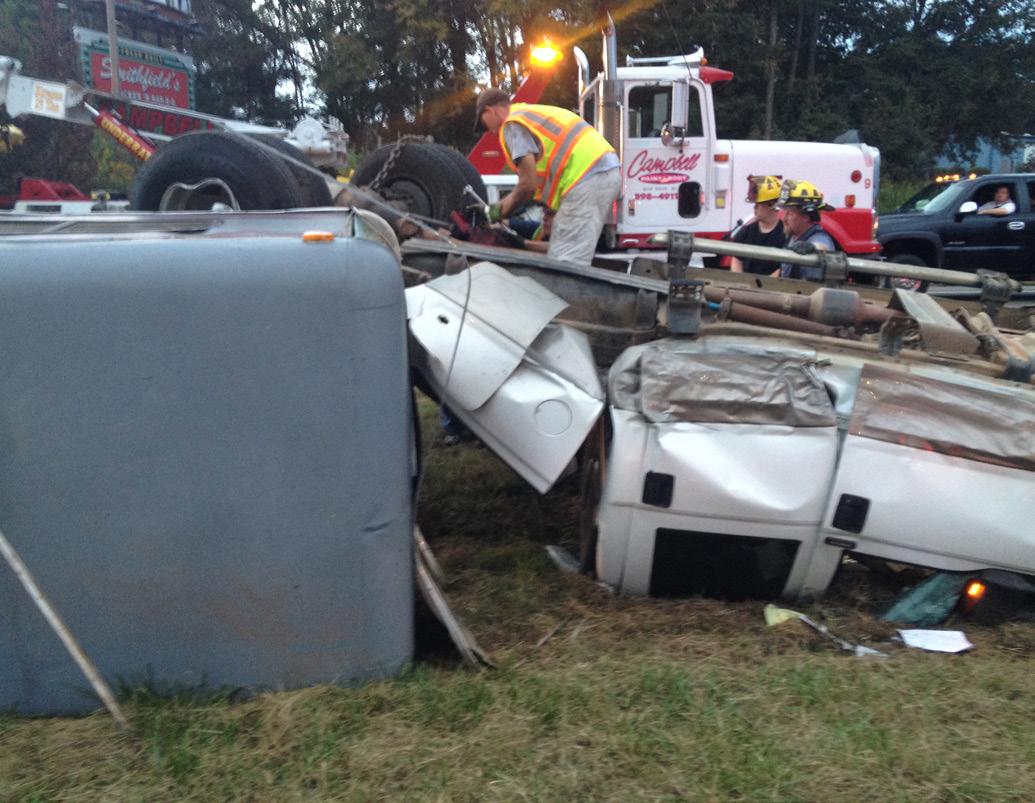
2 minute read
Large Animal Emergency Rescue
PHOTO COURTESY OF TLAER
By knowing what to do in the first few minutes of an emergency, you can potentially save your horse’s life. You can also use your skills to help fellow horsepeople in crisis situations. Shown is a horse highly trained to be a rescue training animal.
Learn how taking Technical Large Animal Emergency Rescue courses can save a traveling horse’s life.
By Rebecca Gimenez, PhD
Perhaps you’ve seen amazing photos or videos of horses being extricated from a trailer wreck, led from burning barns, or even lifted in a sling out of a ravine.
Horses can become trapped in overturned or wrecked trailers, culverts, wells, ditches, mud pits, fallen trees, barns, and farm equipment. From these incidents, large animal rescue training has evolved for emergency responders, veterinarians, and interested horsepeople.

In a TLAER Awareness Level Course, you’ll learn how to work with emergency responders to safely cut a trailer and use manipulation methods to remove horses from actual overturned or destroyed trailers. Shown is an actual trailer wreck in North Carolina.
JUSTIN MCLEOD PHOTO

In this training scenario, a trailer has been flipped onto its roof. The mannequin is being removed using a Rescue Glide, which would protect the horse in the event of a real accident.
REBECCA GIMENEZ PHOTO
Would a TLAER course benefit you and your horse?
TLAER offers several course levels. Here’s a rundown of each one.
• Awareness Level Course. This course is the most important one for most interested people, from owners, veterinarians, and firefighters to animal-control, humane and law enforcement officers.
• Operations Level Course. This course is intended for emergency responders who expect to be deployed to actual live scenes, and involves use of live animals, realistic mannequins, rope techniques, and heavy rescue operations. Individuals taking this course must have previously taken the Awareness Course, as well as Incident Command System training.
• Technician Level Course. This course is reserved for members of Urban Search and Rescue Teams, and other highly trained and specialized technical rescue teams.
What You’ll Learn
TLAER Awareness Level Course participants achieve certification based on National Fire Protection Association Standards. Here’s a sampling of what you’ll learn.
• Roadside management. You’ll learn how to plan for roadside management that puts personnel safety first in the event of a wreck or trailer/tow-vehicle failure, especially in poor road conditions, such as ice, snow, darkness, smoke, and flooding.
• Calm action steps. The course’s “keep it simple” approach emphasizes controlling panic, calling 911 and a local large animal veterinarian, then forming a plan in coordination with resources at hand. You’ll learn how to plan ahead for first-aid, containment, and follow-on transport to definitive veterinary care.
• Extrication. You’ll learn how to work with emergency responders to safely cut a trailer and use manipulation methods to remove horses from actual overturned or destroyed trailers.
• Natural-disaster planning. You’ll learn how to prepare for natural disasters and plan an evacuation route.
How to Sign Up
TLAER courses are typically offered all over the United States and Canada, and occasionally in Europe and Australia. Due to the COVID-19 pandemic, this year’s courses have been postponed to 2021. For more information, go to the TLAER website, and check for scheduling updates. Also consider joining TLAER on Facebook, where thousands of professionals working in the emergency-response field post and discuss incidents from around the world.

TLAER students at Eastern Kentucky University learning emergency-rescue skills with Ariel, a highly trained rescue-training animal.
PHOTO COURTESY OF TLAER


